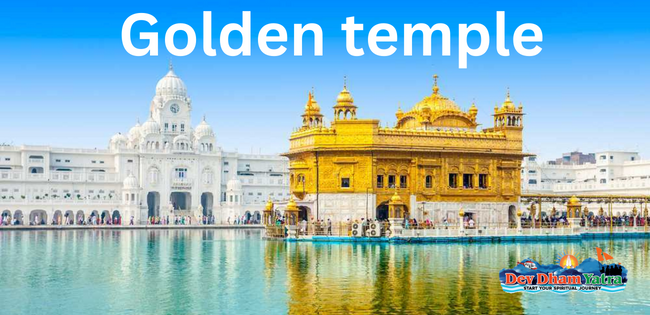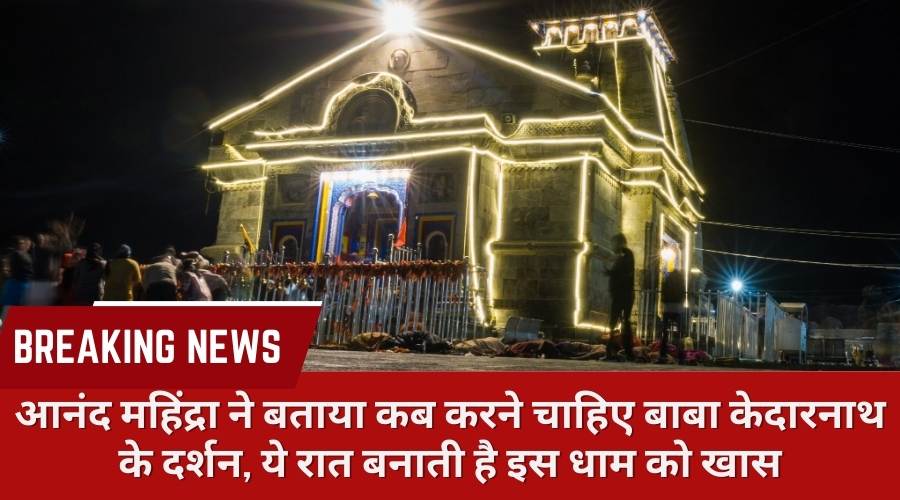About golden temple:-
The Golden Temple Amritsar India (Sri Harimandir Sahib Amritsar) is not only a The Sikhs’ principal venue of worship is also a representation of equality and human brotherhood. Everyone, irrespective of caste, creed or caste can seek spiritual peace and religious fulfillment without any hindrance. It also represents the unique identity, pride and heritage of the Sikhs.
It is among the most sacred places in Sikhism, along with Gurdwara Janam Asthan in Nankana Sahib and Gurdwara Darbar Sahib Kartarpur in Kartarpur.
Sri Harmandir Sahib, also known as Sri Darbar Sahib or Golden Temple, (due to its natural beauty and golden coating for the English-speaking world) is named after the shrine of Hari (God) . Sikhs from all over the world want to visit Sri Amritsar every day and pay their respects at Sri Harmandir Sahib
.
History of golden temple:-
According to Sikh historical records, the land that would become Amritsar and the home of the Harimandir Sahib, was chosen by Guru Amar Das, the third guru of the Sikh tradition. It was then called Guru da Chakka, when he asked his disciple Ram Das to find land to start a new city with a man-made pool.After Guru Ram Das succeeded Guru Amar Das in 1574, and faced hostile opposition from Guru Amar Das’s sons, Guru Ram Das founded the city. Which came to be known as “Ramdaspur”.
Completing the pool with the help of Baba Buddha (not to be confused with Buddha of Buddhism). Guru Ram Das built his new official center and house next to it. He invited merchants and artisans from other parts of India to settle with him in the new city.
The city of Ramdaspur was expanded during the time of Guru Arjan, funded by donations and by voluntary works. The city became the city of Amritsar, and the area developed into a temple complex)
Construction activity between 1574 and 1604 is described in the Mahima Prakash Vartak, a semi-historic Sikh biographical text composed in 1741, and the earliest known document relating to the lives of all ten gurus.
In the new gurdwara, Guru Arjan placed the Sikhism scripture in 1604. Continuing the efforts of Guru Ram Das, Guru Arjan established Amritsar as a primary Sikh pilgrimage site. He wrote a large amount of Sikh scriptures including the popular Sukhmani Sahib

The site’s land was purchased by Guru Ram Das. There are two stories on how he acquired this land. In one, based on a gazetteer record, land was purchased with a Sikh donation of Rs 700 from the people and owners of Tung village. In another version, Emperor Akbar is said to have donated the land to the wife of Guru Ram Das.
In 1581, Guru Arjan started the construction of the Gurdwara. The pool was kept empty and dry during construction. It took 8 years to complete the first edition of Harmandir Sahib. Guru Arjan planned a gurdwara at a lower level from the city to emphasize the need for humility and to shed his ego before entering the premises to meet the Guru. He also demanded that the Gurudwara complex should be open on all sides to emphasize that it is open to all.
Inside the pool, the sanctum sanctorum, where his guru seat was, had only one bridge to emphasize that the ultimate goal was one, says Aurobindo-Pal Singh Mandir. The Gurudwara made of bricks was completed in 1589. Some later sources are believed to have invited Guru Arjan to the Sufi saint Mian Mir of Lahore to lay its foundation stone, a sign of pluralism and welcomed by Sikh tradition.
According to Sikh traditional sources such as Sri Guru Suraj Prakash Granth, it was placed by Guru Arjan himself. The pond was filled with water after the inauguration. On 16 August 1604, Guru Arjan completed the expansion and compilation of the first edition of the Sikh scripture and placed a copy of the Adi Granth in the gurdwara. He chose Baba Buddha to be the initial granthi.
Devastation and reconstruction from the Mughal Empire:-
The growing influence and success of Guru Arjan attracted the attention of the Mughal Empire. Jahangir, the Mughal Emperor, ordered the arrest of Guru Arjan and demanded that he convert to Islam. He refused, was tortured and executed in 1606 AD. Guru Arjan’s son and successor Guru Hargobind left Amritsar and moved to the Shivalik hills to escape persecution and save the Sikh Panth.
In the 18th century, Guru Gobind Singh and his newly founded Khalsa Sikh returned and fought to liberate it. The Golden Temple was seen by the Mughal rulers and the Afghan sultans as the center of Sikhism and remained a main target of persecution.

The Golden Temple served as the focal point for important Sikh historical events:-
- The governor of Lahore dispatched his soldiers in 1709 to repress and stop the Sikhs from congregating for their festivals of Vaisakhi and Diwali. The Sikhs, however, disobeyed by congregating in the Golden Temple. Banda Singh and countless other Sikhs were detained and killed in 1716.
- Mani Singh, the keeper of the Golden Temple, was captured and put to death in 1737 by order of the Mughal governor. Masse Khan, who he appointed as police commissioner, moved inside the Temple and turned it into an entertainment venue with dancing females. He contaminated the pool. Masse Khan was assassinated inside the this Temple in August 1740 as retaliation for the sacrilege committed there.
- Another Lahore official, Diwan Lakhpat Rai, who was employed by Yahiya Khan and was out for his brother’s murder, filled the pool with sand in 1746. When Muin ul-Mulk slowed down Mughal attacks against Sikhs and asked for their assistance during his operations in Multan in 1749, Sikhs restored the pool.
- The Golden Temple was desecrated in 1757 by Ahmad Shah Durrani, also known as Ahmad Shah Abdali, the Afghan ruler who attacked Amritsar. Before leaving for Afghanistan, he ordered excrement and the entrails of butchered cows to be dumped into the pool. The Sikhs rebuilt it once more.
- When Ahmad Shah Durrani came back in 1762, he ordered the Golden Temple to be set ablaze with gunpowder. In its grounds, Sikhs returned to celebrate Diwali. In Amritsar, Punjab, Sikh Jarnail Singh Bhindranwale and his supporters left the Harmandir Sahib (Golden Temple) complex’s buildings. The causeway, sanctum, and new main entrance (Darshan Deorhi) were finished in 1776, while the pool’s floor was finished in 1784. In order to provide the pool with fresh water from the Ravi River, the Sikhs also finished a canal.
Ranjit Singh era reconstruction of golden temple:-
In 1802, at the age of 22, he took Amritsar from the Bhangi Sikh Misl, paid tribute to the Golden Temple and announced that he would renovate and rebuild it with marble and gold. The temple was renovated in 1809 in marble and copper, and in 1830 Ranjit Singh donated gold to cover the sanctum sanctorum.
After Indian independence, there was destruction and rehabilitation:-
The temple was demolished during Operation Blue Star. It was the codename for an Indian military operation carried out between 1 and 8 June 1984 to remove terrorist. From the Harmandir Sahib (Golden Temple) complex buildings in Amritsar, Punjab, Sikh Jarnail Singh Bhindranwale and his adherents. The decision to launch the attack was with Prime Minister Indira Gandhi.
Architecture of Golden temple:-
The architecture of the Golden Temple reflects the various architectural practices practiced in the Indian subcontinent, as various iterations of the temple were rebuilt and restored. The temple has been described by Ian Kerr and other scholars as a blend of Indo-Islamic Mughal and Hindu Rajput architecture.
The sanctum sanctorum is a 12.25 x 12.25 m square with two storeys and a gold-leaf dome. This sanctum has a marble platform which is 19.7 x 19.7 m square. It sits inside an approximately square (154.5 x 148.5 m2) called Amritsar or Amritsarovar (Amrit means nectar, sar is a shortened form of Sarovar and means pool). The pool is 5.1 m deep and is surrounded by a marble passage of 3.7 m wide circumference which is circumambulated in a clockwise manner. The sanctum sanctorum is connected to the platform through a bridge and the entrance gate is called Darshani Sodhi (from the Darshana Gate).
Teja Singh and Akal Takht Samundri Hall
In front of the sanctum and the bridge is the Akal Takht building. It is the principal Takht, the center of authority in Sikhism. Its name Akal Takht means “throne of the timeless (God)”. The institution was founded by Guru Hargobind after the martyrdom of his father, Guru Arjan, as a place to conduct ceremonial, spiritual and secular affairs, issuing binding writs at Sikh gurdwaras far from their location.
Ramgarhia Bunga and Clock Tower:-
Ramgarhia Bunga – The two tall towers visible from the parikrama (parikrama) around the tank are named after a Sikh subgroup. The red sandstone minaret-style bunga (bunga) towers were built in the 18th century during the period of Afghan invasions and temple demolition. It is named after Sikh warrior and Ramgarhia Misal chief Jassa Singh Ramgarhia.
Ber trees
The Golden Temple complex was originally open and there were many trees around the pool. It is now a walled, two-storey courtyard with four entrances, which preserves three ber trees (ber). The main Ghanta Ghar with a clock among them is to the right of the Deori entrance, and is called Ber Baba Buddha.
Guru Ram Das Langar
The Harmandir Sahib complex has a langar, a community-run free kitchen and dining room. It is located outside the entrance, on the east side of the courtyard near Dukh Bhanjani Ber. Here food is served to all visitors who want it, regardless of faith, gender or economic background.
Best time to visit Golden temple:-
Since the Gurdwara in Amritsar is open round the clock, there is no specific time to visit the Temple. The months of November and April are the best time to visit the Temple as devotees visit this Gurudwara during the festival of Guru Nanak Jayanti and Baisakhi.
Entry Fee for Golden temple:-
Visitors do not need to purchase a ticket to enter the Golden Temple because it is a holy site. Pilgrims can also make reservations to get the most out of their Golden Temple package excursions. Vacationers can reserve a room at the Amritsar Golden Temple to guarantee a nice stay because there are seven inns that house pilgrims and they operate on a first-come, first-served basis.
How to reach in Golden temple :-
| By AIR | By Train | By Bus | |
| New delhi to Amritsar | 1.00 hour | 8.00 hour | 06.00 hour |
| Mumbai to Amritsar | 3.00 hour | 12.00 hour | 32.00 hour |
| Pune to Amritsar | 07.00 hour | 16.00 hour | 15.00 hour |
| Chennai to Amritsar | 07.00 hour | 17.00 hour | 17.00 hour |
| Kolkata to Amritsar | 05.00 hour | 16.00 hour | 29.00 hour |
| Dehradun to Amritsar | 4.00 hour | 11 hr 5 min | 7 hr 36 min |
Location of Golden temple :-
The Golden Temple is situated in Amritsar, the sacred city of the Sikhs. The Golden temple is notable for its complete golden dome, it is one of the most significant pilgrim places for Sikhs. The Mandir is a two-story building that is constructed on a marble slab that is 67 feet square.
Golden Temple Rd, Atta Mandi, Katra Ahluwalia, Amritsar, Punjab 143006
Travel tip for Golden temple :-
- Avoid bathing at Har Ki Pauri Only the outer
- Parikarma may be used for photography
- In the Parikarma, food is not permitted.
- Never stand around around the temple grounds with your head exposed.




















